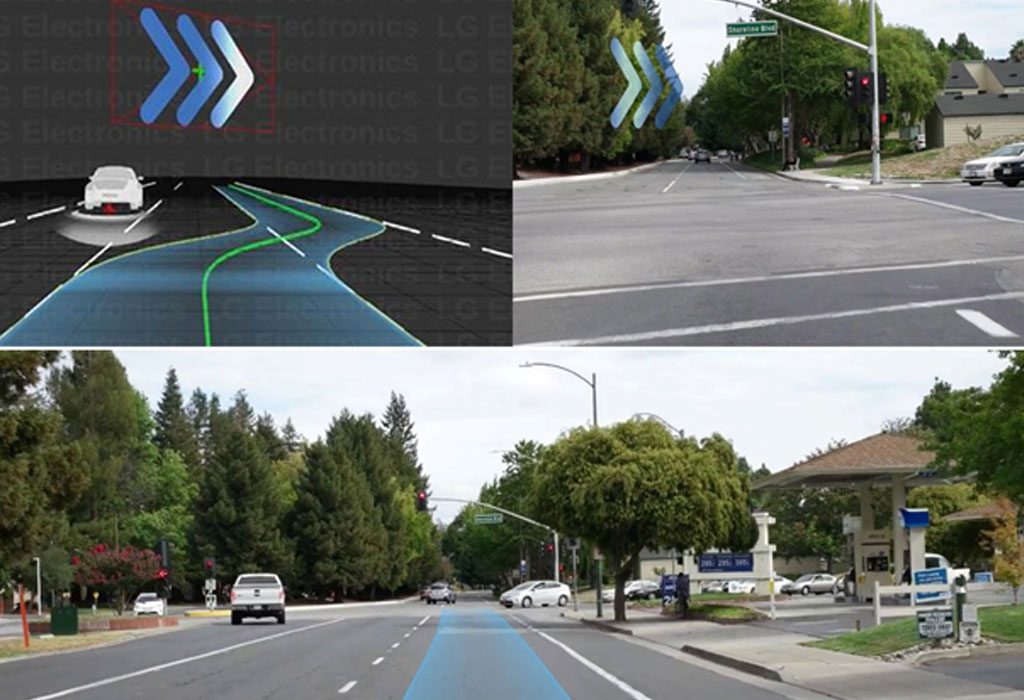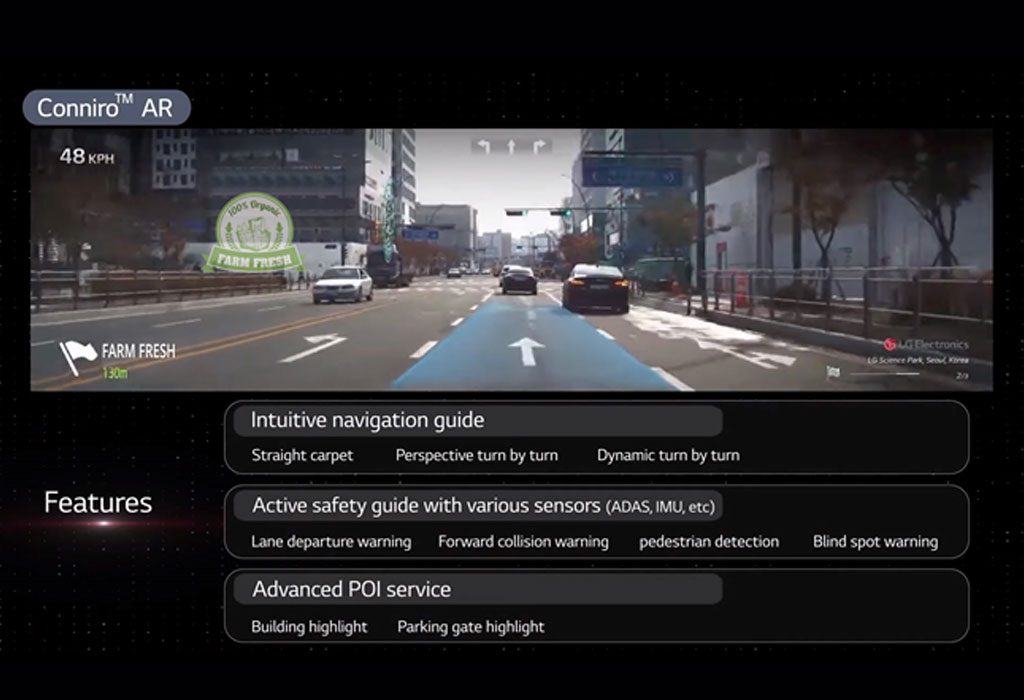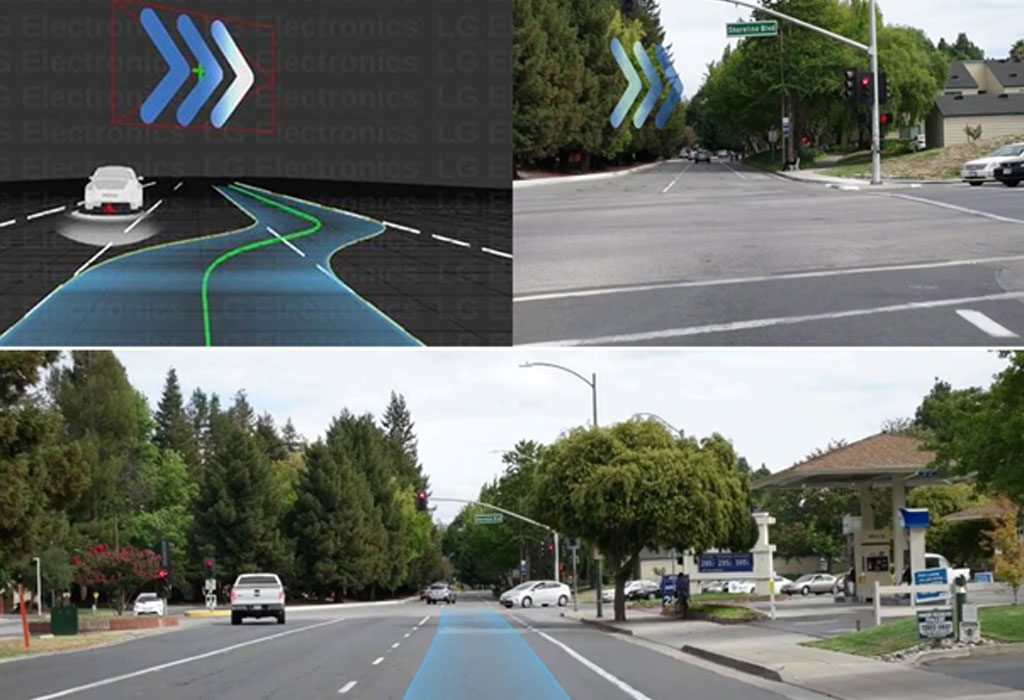LG Electronics has revealed a new AR solution that supports various systems such as head-up display (HUD) and center information display (CID) for automotive and in-vehicle use.
LG says the AR solution displays key information including ADAS alerts, navigational hints, points of interest (POIs) and pedestrian detection directly onto the road. It also supports fully customizable modeling of the AR user interface without complicated coding through a collaboration with Candera, an HMI tool provider to automotive and industrial customers worldwide.
Unlike traditional HUDs displaying static information, AR head-up displays go one step further by blending key information directly onto the lane and into the driver’s field-of-view. LG says this requires the integration of a considerable volume of vehicle sensor data to enable real-time projection of information, warnings and alerts.
To implement these complex requirements, LG Electronics has developed an AR engine that can merge the real world with the digital content. The LG AR engine is built on an advanced sensor fusion framework that merges information observed by in-vehicle sensors in real time, in an attempt to predict the future state of all objects of interest around a car.
LG says this ensures the stabilization of AR content against dynamic vehicle motion and reduces system latency. The company also says its AR engine is now well optimized in terms of computational complexity, and that it can achieve high frame rates in low-performance system-on-chip (SoC) environments. In addition, it is also applicable to mobile devices such as Android phones by using built-in mobile sensors as input to the AR engine.
Combined with its enhanced visualization technologies, the result is an AR solution that supports intuitive scenes such as navigational hints (route carpets, directional arrows, goal pins, POI highlights), ADAS alerts (active cruise control, lane departure warning, forward collision warning, pedestrian detection), and many more.
“We believe that our technical readiness will provide better values to our customers, and mass production experience of various OEMs will further expand our business in the market,” said Sukjin Chang, vice president of Smart Mobility Lab at LG Electronics.
To make the AR solution fully customizable for different OEM UX requirements, LG partnered with Austrian HMI tool provider Candera, using its render engine to minimize latency and enhance clarity of the indicated information. Furthermore, OEM requirements for a fully customizable HUD can be achieved with Candera’s HMI design tool, CGI Studio, which has been developed to require no coding from users.
“When it comes to ADAS alerts or safety warnings, it is important that the information is displayed in real time with zero delay,” explained Roberto Hofer, technical sales manager at Candera. “Incorporating further performance and latency optimizations into our render engine, we can ensure an in-time visualization of warnings as well as a pinpoint accuracy of visualized objects even at high speeds.”





